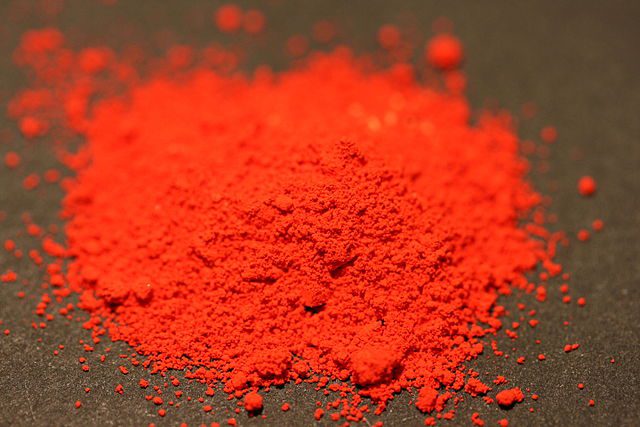
Have you ever wondered about the stories behind the colors that grace famous paintings? Each hue tells a tale of discovery, adventure, and sometimes, a bit of mystery. From the depths of ancient mines to the vibrant markets of the Renaissance, the journey of these oil paint colors is as colorful as the pigments themselves. Dive into the fascinating histories of ten iconic oil paint colors and explore the secrets that have captivated artists for centuries.
Ultramarine Blue
Ultramarine blue comes from the lapis lazuli stone, a gem mined in Afghanistan for over 6,000 years. Its deep blue color made it more valuable than gold. Artists in the Renaissance loved it for its vibrancy. People often called it “ultramarine,” meaning “beyond the sea,” because of its origins. The expense made it a symbol of luxury and purity.
Painters reserved ultramarine for special parts of their artwork. They often used it for the Virgin Mary’s robes, representing holiness. The brilliant hue made the figures stand out. Michelangelo wanted to use it for the Sistine Chapel, but high costs prevented him. Therefore, he had to look for alternatives.
The synthetic version of ultramarine became available in 1826. French chemist Jean-Baptiste Guimet discovered how to produce it cheaply. Artists could now use it more freely. The synthetic ultramarine blue changed how painters worked, as they could cover larger areas with this bright hue. Its invention democratized art, making rich blues accessible to everyone.
Carmine Red
Carmine red boasts a unique history. People make it from cochineal insects, which live on cacti in Central and South America. Indigenous people knew its value long before Europeans arrived. The Aztecs and Mayans used it for dyeing textiles and painting manuscripts. When Europeans discovered it, the dye quickly became a hot commodity.
During the 16th century, Spain controlled the cochineal trade, as they conquered Mexico. They exported it to Europe, where artists and textile makers cherished its rich, vibrant red. “This red is worth its weight in gold,” remarked a 16th-century Spanish merchant. Painters used it to create intense reds that made their artworks pop.
Over time, synthetic dyes began to replace natural carmine. The decline in demand led to a drop in production. Today, artists still appreciate carmine red for its deep, natural hue. It remains a favorite for those who value traditional techniques and authentic colors.
Lead White
Lead white is one of the oldest pigments in the world. Artists have used it since antiquity for its opacity and fast-drying properties. It became a staple in the palettes of Old Masters like Rembrandt and Vermeer. The color offered excellent coverage and helped build texture and light.
Despite its popularity, lead white posed health risks. Artists began to experience lead poisoning, leading to its decline. As safer alternatives emerged, people started to move away from using lead white. Zinc white and titanium white became the go-to choices for modern artists.
Today, some traditional painters still seek out lead white for its unique qualities. They appreciate its rich texture and historical significance. However, many choose safer, non-toxic options. Artists now have a variety of whites to achieve the effects they desire.
Indian Yellow
Indian yellow is a pigment with a story as fascinating as its hue. People made it from the urine of cows fed exclusively on mango leaves. This unusual method produced a bright, transparent yellow that captivated artists. The pigment became popular in Europe during the 19th century.
However, concerns about animal welfare led to controversy. The process required the cows to live in unhealthy conditions. Because of this, production eventually ceased, and the original pigment disappeared. “Indian yellow was the color of dreams,” lamented one artist upon its loss.
Synthetic alternatives now mimic the original hue without harming animals. Today, artists can enjoy the color’s vibrant qualities guilt-free. Indian yellow continues to inspire, reminding us of its rich history and unusual origins.
Verdigris
Verdigris offers a vivid green color with an interesting background. Artists and alchemists made it by exposing copper to acetic acid, such as vinegar. The process created a bright, transparent green, used in artworks since antiquity. It adorned medieval manuscripts and Renaissance paintings alike.
Artists found verdigris both beautiful and challenging to use. Its unstable nature caused it to change color over time. The pigment could shift from bright green to a dull brown, frustrating painters. Leonardo da Vinci once noted its tendency to fade in his notebooks.
Eventually, more stable green pigments replaced verdigris. However, it left its mark on art history. Artists today use synthetic verdigris to recreate the vibrant greens of the past. Its legacy lives on, a testament to the ingenuity of ancient color makers.
Prussian Blue
Prussian blue is a pigment born from a happy accident. In the early 18th century, a Berlin chemist discovered it while attempting to make red. Instead, he created a new blue pigment. Its deep, rich hue quickly captured artists’ attention, changing the art world forever.
This synthetic pigment offered a cheaper alternative to ultramarine. Prussian blue spread rapidly across Europe, appearing in artworks everywhere. Its affordability allowed artists to use blue more liberally. The color found its way into masterpieces by artists like Katsushika Hokusai and Édouard Manet.
Prussian blue continues to influence art and science. It played a role in the development of cyanotype photography. The pigment also inspired the term “blueprint,” due to its use in engineering. Today, it remains a popular choice for artists seeking a rich, historic blue.
Mummy Brown
Mummy brown has one of the most peculiar histories of any pigment. People made it from ground-up Egyptian mummies, using the bitumen-soaked remains. Artists valued its rich, warm brown tone. It became popular in the 16th and 17th centuries, capturing the imagination of painters.
Pre-Raphaelite artists like Edward Burne-Jones used mummy brown extensively. The exotic origin added to its allure. However, supplies began to dwindle, and ethical concerns arose. As people realized the source of the pigment, they became uncomfortable with its use.
Eventually, mummy brown fell out of favor. Synthetic browns replaced it, offering similar hues without ethical dilemmas. Today, the pigment serves as a curious footnote in art history. It reminds us of the lengths people once went to for the perfect color.
Cobalt Blue
Cobalt blue is a vibrant pigment that changed how artists used color. Discovered in the early 19th century, it offered a stable, lightfast blue. It became the first synthetic pigment to rival ultramarine in quality and vibrancy. Artists quickly embraced it, and it transformed their work.
Painters like J.M.W. Turner and Vincent van Gogh appreciated cobalt blue’s versatility. It allowed them to create vivid skies and seascapes, bringing their art to life. “Cobalt blue gives me a feeling of depth,” van Gogh wrote in a letter to his brother. The pigment offered new possibilities for artistic expression.
Today, cobalt blue remains a staple in artists’ palettes. Its rich, pure color inspires creativity and innovation. The pigment continues to play a vital role in the world of art, bridging the gap between tradition and modernity.
Naples Yellow
Naples yellow is a historic pigment with a sunny disposition. People used it since antiquity for its warm, golden hue. The pigment originated from lead antimonate and became popular in European painting. Artists valued it for its opacity and rich color.
Painters like Titian and Vermeer used Naples yellow to create glowing highlights. The color added warmth and depth to their work, enhancing their compositions. Despite its popularity, concerns about toxicity led to its decline. Modern alternatives emerged, offering safer options.
Today, synthetic Naples yellow captures the essence of the original. Artists continue to use it for its vibrant, cheerful qualities. The pigment’s history adds to its charm, reminding us of its long-standing role in art.
Cadmium Red
Cadmium red introduced a new era of color in the early 20th century. It provided a vibrant, lightfast alternative to older red pigments like vermilion. Chemists developed it from cadmium sulfide, and it quickly gained popularity. Artists loved its intense color and excellent covering power.
Painters like Henri Matisse and Georgia O’Keeffe embraced cadmium red. Its brilliant hue allowed them to explore bold new styles. “Red is not just a color, it’s an emotion,” Matisse famously said. The pigment offered them a way to express passion and energy.
Today, cadmium red remains a favorite among artists. It provides the rich, powerful reds that define many modern works. The pigment’s impact on art continues, inspiring future generations to explore the possibilities of color.
Conclusion
These ten oil paint colors reveal the fascinating interplay between art and history. Their stories span continents and centuries, reflecting cultural shifts and scientific advancements. From the luxurious ultramarine blue to the vibrant cadmium red, each pigment has left its mark on the world. Artists continue to draw inspiration from these colors, carrying their rich histories forward into new masterpieces. These colors remind us of the creativity and curiosity that drive art, ensuring that their vibrant tales will endure for generations to come.




